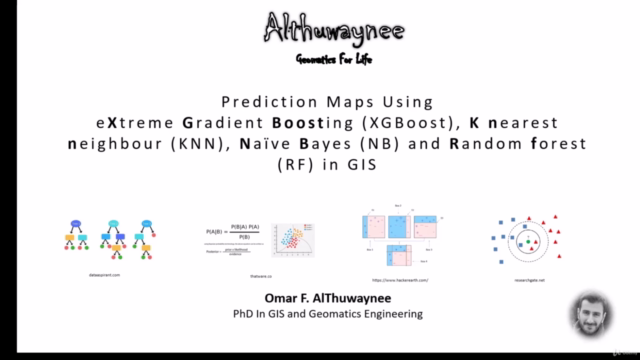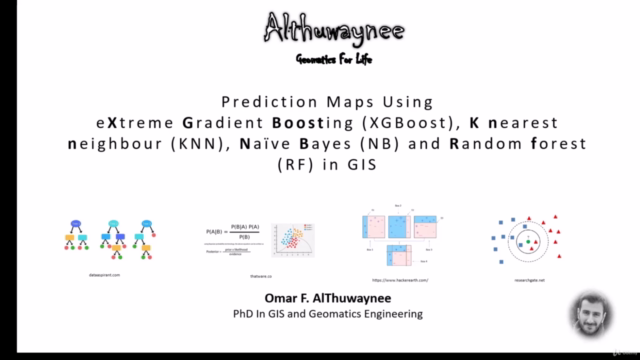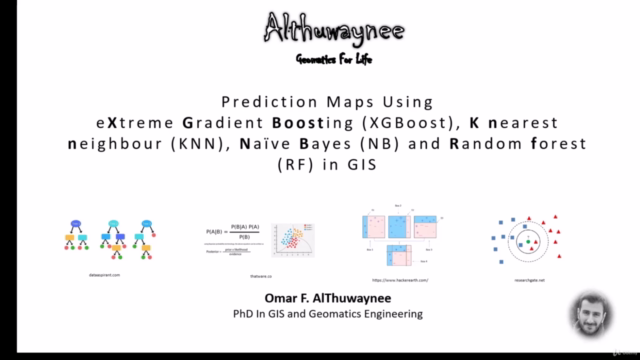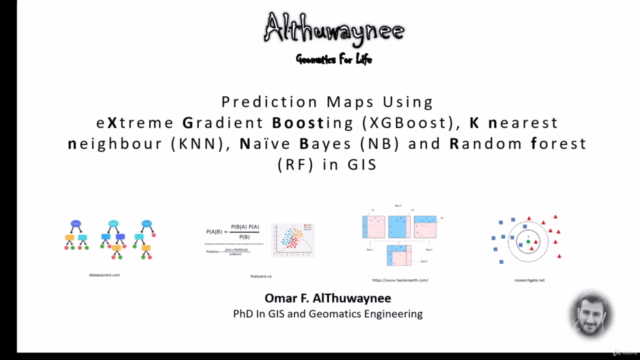Prediction Mapping Using GIS Data and Advanced ML Algorithms

Why take this course?
🎓 Course Title: Prediction Mapping Using GIS Data and Advanced ML Algorithms
Course Headline: Master Geo-Hazards and Air Pollution Predictions with Extreme Gradient Boosting, K Nearest Neighbour, Naïve Bayes, & Random Forest 🚀
Course Description:
In this comprehensive course, Dr. Omar AlThuwaynee guides you through the intricacies of leveraging four powerful machine learning techniques—Extreme Gradient Boosting (XGB), K Nearest Neighbour (KNN), Naïve Bayes (NB), and Random Forest (RF)—to analyze and predict various geospatial challenges. This course is designed to cover two distinct types of applications, with a focus on real-world problems such as habitat changes, air pollution prediction, and geo-hazard susceptibility mapping.
Project 1: Multi-labeled Target Prediction via Multi-label Classification
In this project, we delve into the complexities of multi-label classification, where the target variable (Y) can have multiple labels with ordinal values (e.g., Names, description, ordinal value like small, large, X-large). Our goal is to generate multiple output maps that reflect changes in habitat, air pollution levels (Good, moderate, unhealthy, Hazardous), and complex diseases risk factors.
Key Highlights:
-
Application Spotlight: Prediction of PM10 concentration levels using advanced ML algorithms. This project's findings were published in the Environmental Science and Pollution Research journal, showcasing the real-world impact of our analysis. 📚✨
-
Data: Remote sensing and geospatial resources provide a rich dataset for analysis, allowing for accurate and predictive modeling.
Project 2: Binary labeled Target Prediction
Here, we focus on binary classification problems with two clear classes (e.g., Yes/No, Slides/No slide). We tackle critical issues such as flood-prone areas, climate change consequences, urban heat islands, land uses, and oil spills detection. Our objective is to identify susceptible zones for landslides in specific areas, using the same data from a previous course if you are enrolled.
Key Highlights:
-
Application Spotlight: Landslide susceptibility mapping in prone areas, with a focus on identifying high-risk zones to aid in disaster management and mitigation efforts. 🌤️🌍
-
Data: Utilize freely available remote sensing data to address challenges in data-scarce environments.
Course Outcomes:
- Master the application of advanced machine learning algorithms (XGB, KNN, NB, RF) for geospatial problems.
- Learn to interpret and visualize complex data sets using Geographic Information System (GIS).
- Understand how to extract thematic data efficiently with the help of LaGriSU toolpack.
- Gain the skills necessary to produce predictive maps that can be used for further GIS analysis or directly presented to decision makers and policymakers, potentially contributing to research articles in SCI journals.
Additional Resources:
- LaGriSU Version 2023_03_09: A free toolpack available on GitHub (Althuwaynee/LaGriSU_Landslide-Grid-and-Slope-Units-QGIS_ToolPack) to facilitate the automatic extraction of training and testing thematic data using Grid and Slope units.
Best regards,
Omar AlThuwaynee
Embark on a journey to become an expert in predictive mapping using machine learning and GIS data. Enroll now to harness the full potential of advanced algorithms in solving real-world geospatial challenges! 🌍🔍📊
Course Gallery




Loading charts...